
We inverted part of our trip in that we had to taxi from Gibraltar to the border, walk across the border, and then get a taxi to the Algeciras train station. From Algeciras we got the "slow train" to Seville. The trip shot a whole day, but it was reasonably comfortable except for the last, very slow leg. We got into the Santa Justa station and then got a short taxi ride to our hotel near the "center of the action" along the Guadalquivir River at the Triana Bridge. We stayed at the Bequer Hotel, which was very nice. We stayed at this hotel on one of our previous trips to Seville.
For good or bad, the weather was quite
hot. A far cry from what we had in Grenada.
Personally, I prefer hot to cold, so it was OK. The only sad news in all of
this is that I got some bad seafood on the second night which
took me out for the following day. And, I felt marginal
for the day after that. These things are what I call
normal traveler risks. But while I was functional, we got
a chance to explore the city on foot.
The photos below are what we saw.

We
headed out on foot from the hotel and we passed this bar that
made me laugh. The name is "Alfonso, the king of the
snails".
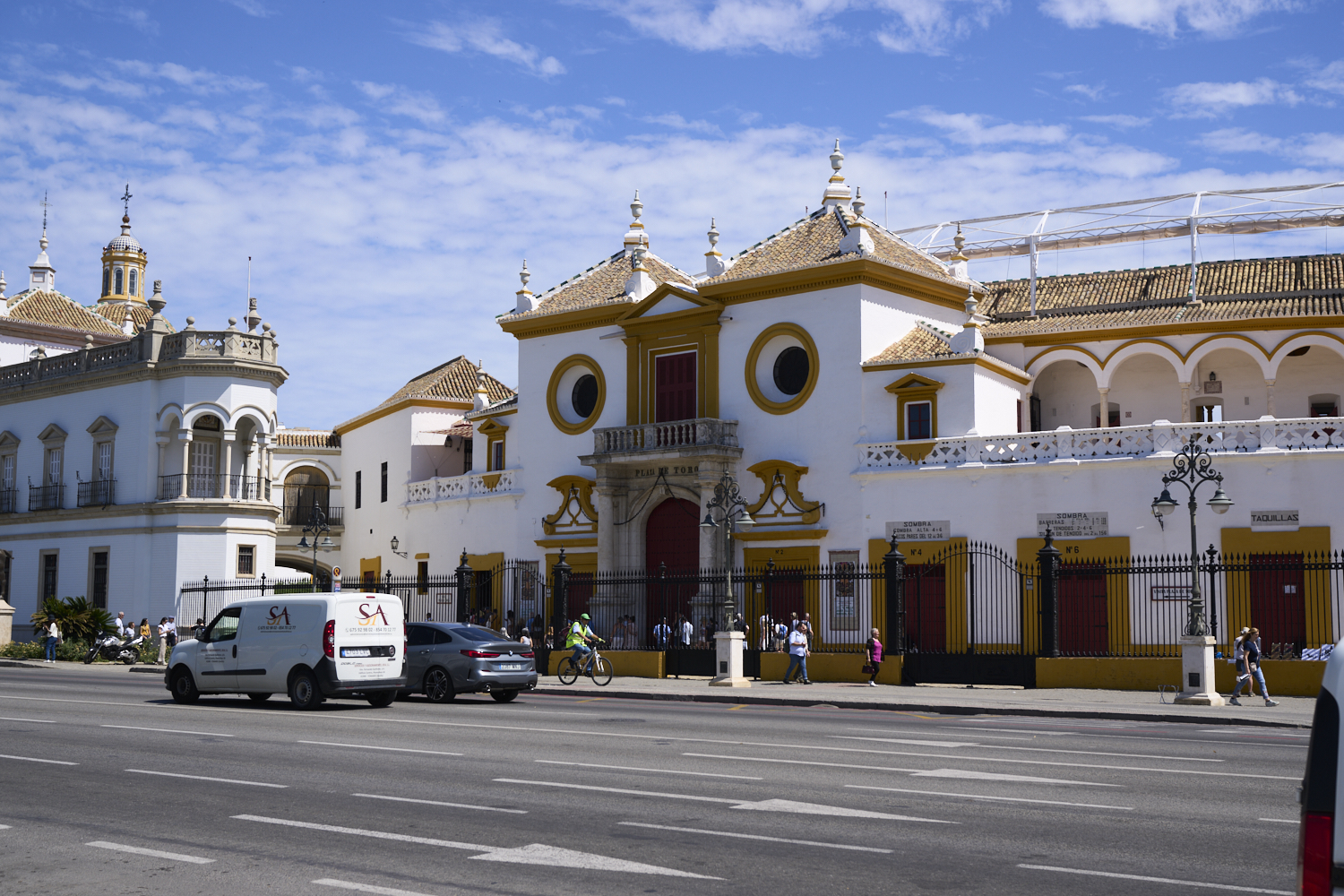
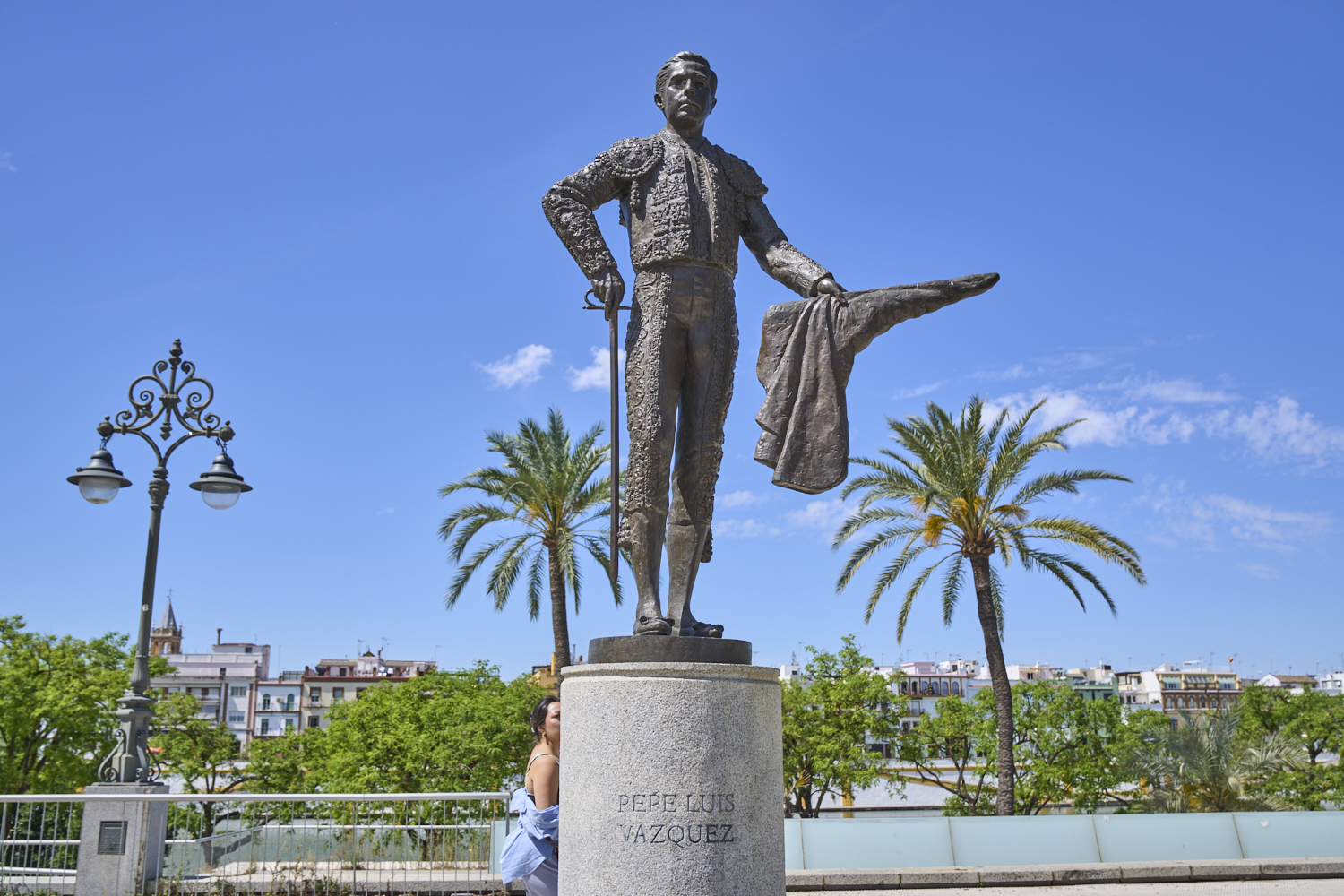
Bullfights
are the heart and soul of Spain and they idolize famous
toreadors. This statue is outside the ring on the street.

Tour
boats were running on the river and the only requirement was
that you were willing to pony up the bucks for the ride.


It was
starting to get uncomfortably hot, so forced smiles are in
order.

Tour
boats of all kinds were cruising the river.
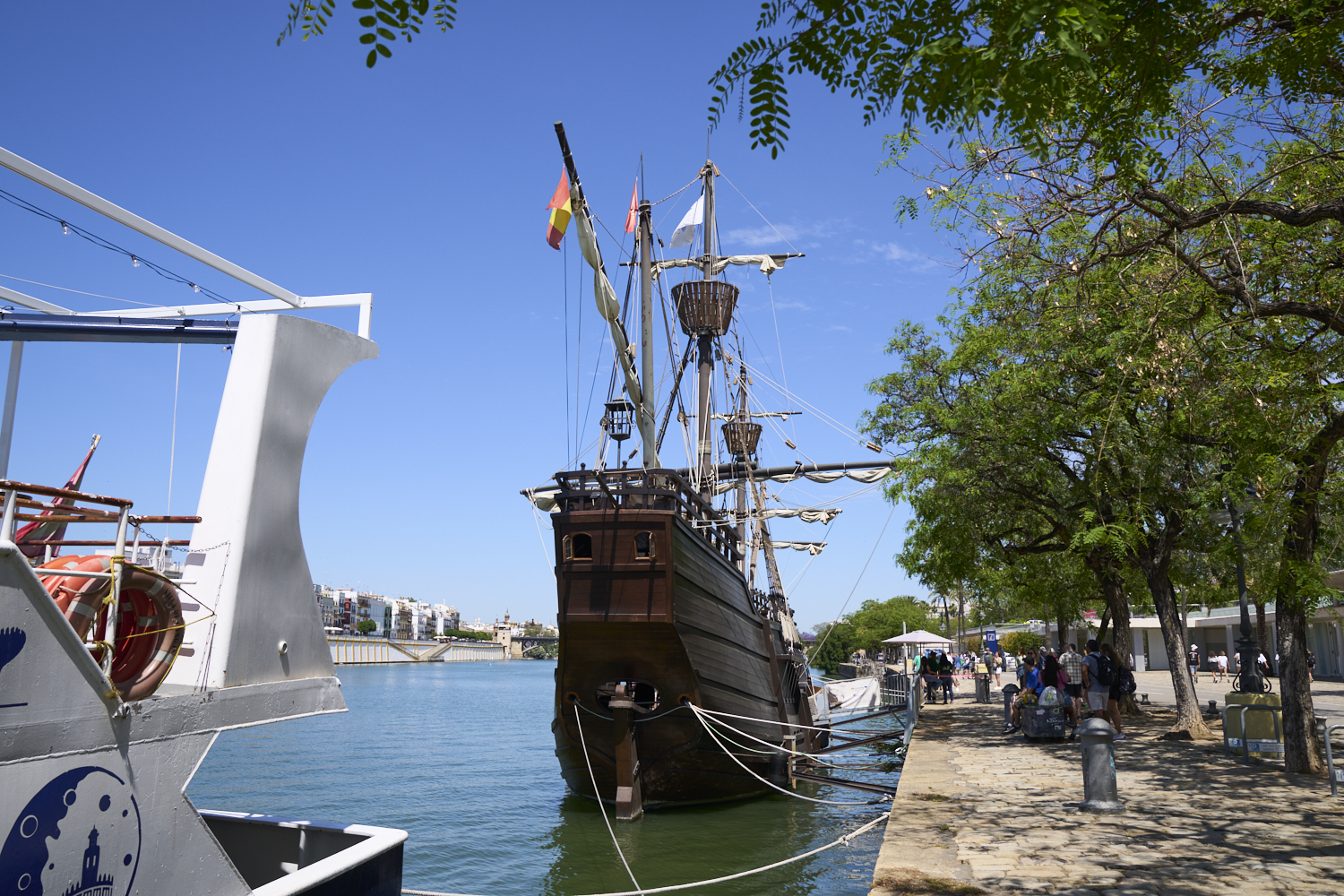
This
monstrosity is a new addition to the waterfront since our last
visit. This was intended to be a replica of Columbus' flag
ship the Nina. Hard to imagine sailing across the Atlantic
in one of these small ships.

This is
is the Torre del Oro. It was a watchtower used to enforce
taxes on river traffic.

A
tasteful, new fountain near the river.

The
older buildings along the river were quite ornate. There
was a pause in the crowds when I took this photo, so it is not
really representative of the congestion at the time. There
were tons of folks out on foot.
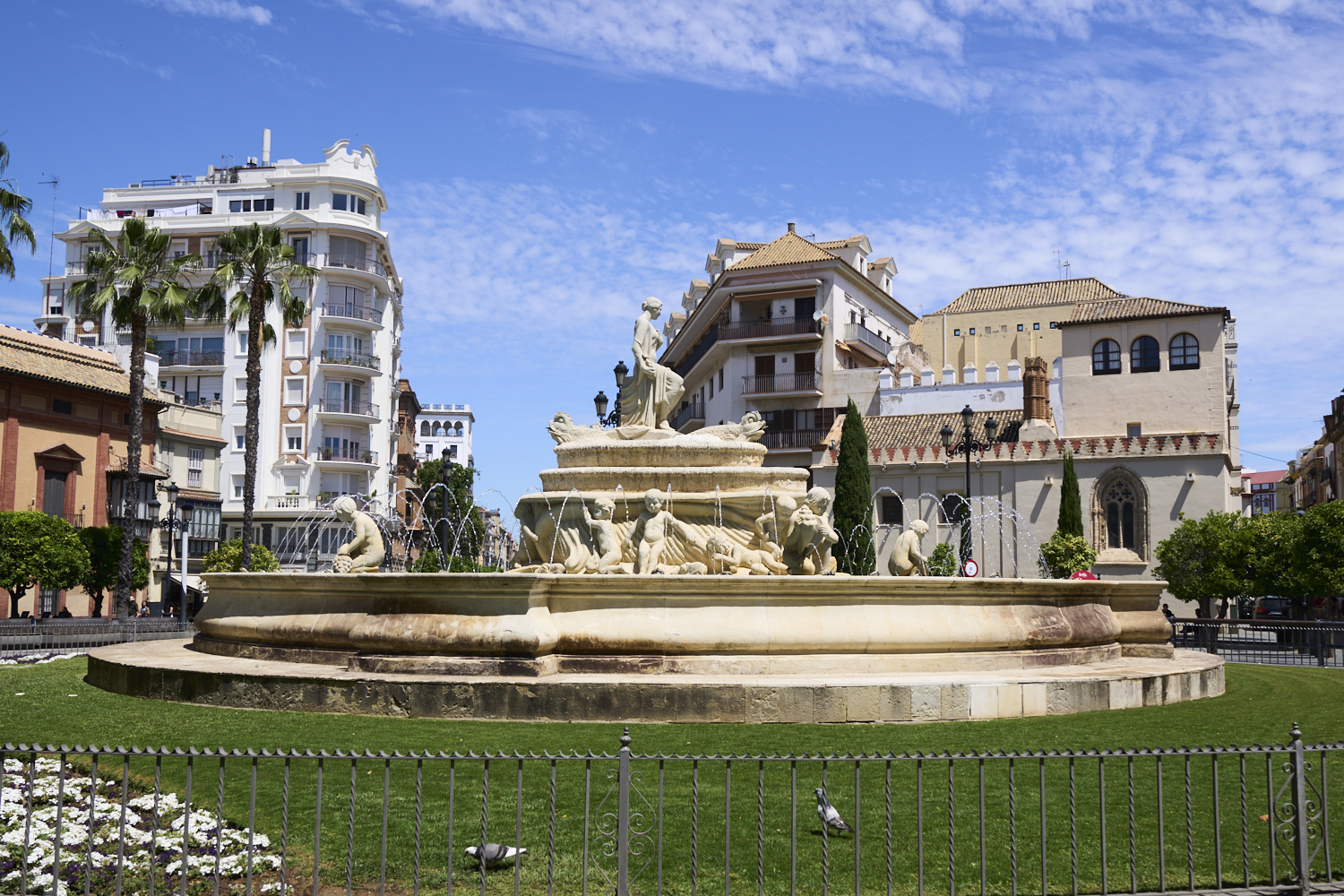
An
older, more ornate fountain in one of the plazas.
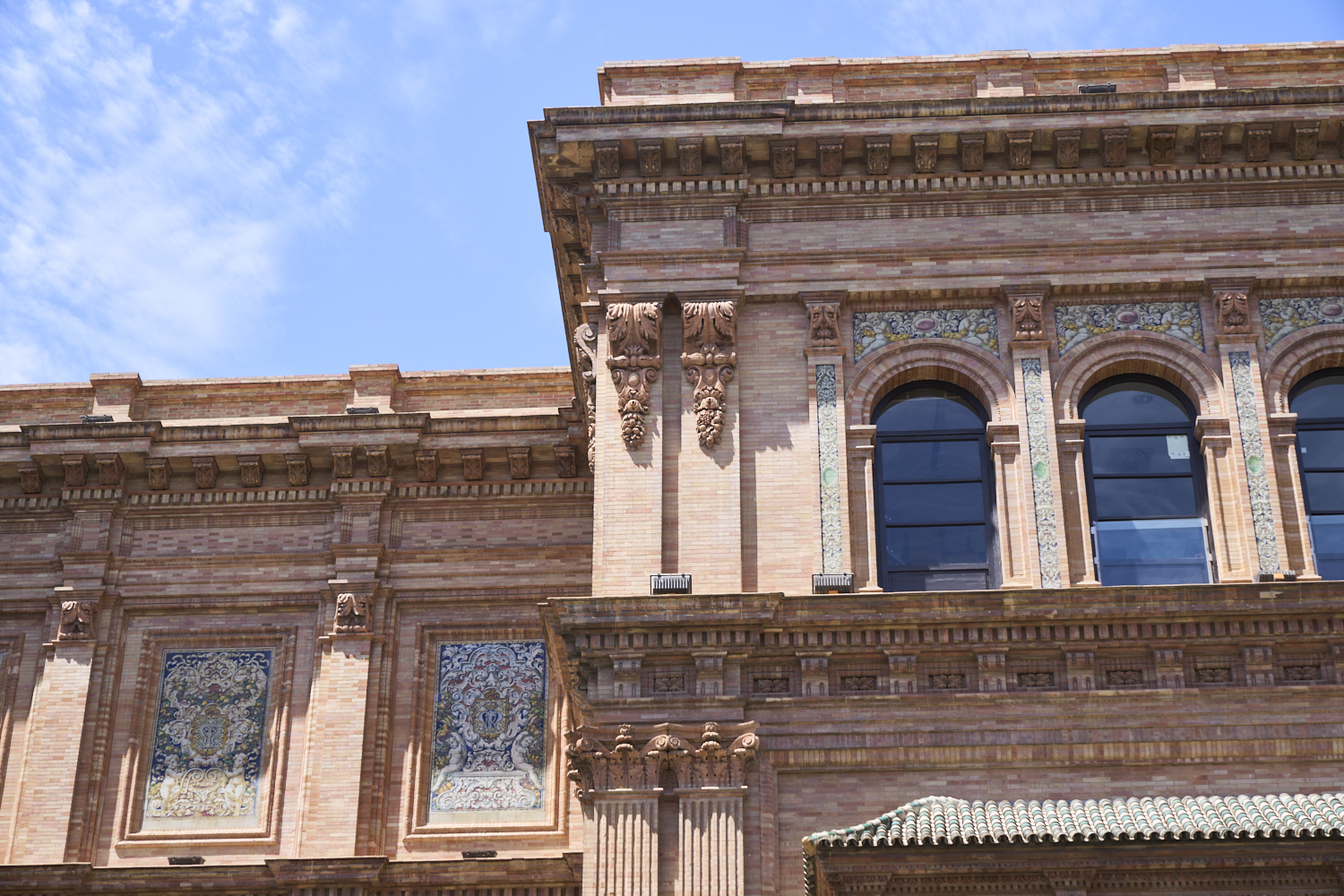
I was
very impressed by the detailed brickwork in this building.
I took a number of photos of it, but had to cull the set down so
this is the only one that prevailed. Note the tile inlays
over the windows and the brick arches.

Our
walking path took us to the Catedral de Sevilla, the main "old"
cathedral in the city. The lines to enter were long and we
had seen the inside on a previous trip, so we elected to
pass. The outside was ornate beyond any reasonable level.

This is
just a small part of the cathedral. By the end of our tour
we would walk around the perimeter.

The
architecture was rather "mixed mode" and consisted of the
influence of several periods, likely due to the fact that the
structure took hundreds of years to build.
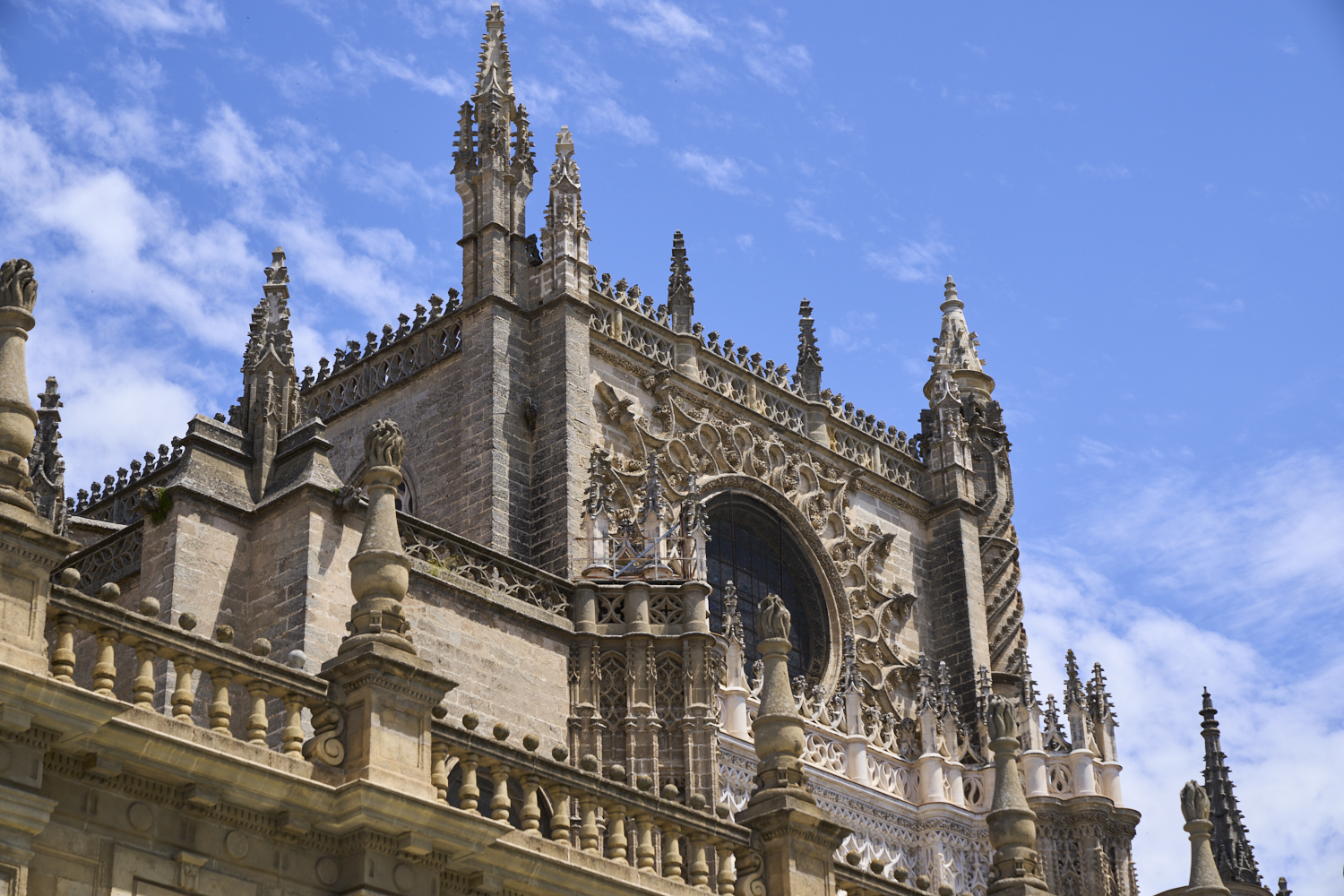
Ornate
spires and adornments decorated the outside of the cathedral.

The
majority of the long line waiting to enter was not visible in
the photo above, but it was substantial. Note the large
statue on in the entrance foyer.
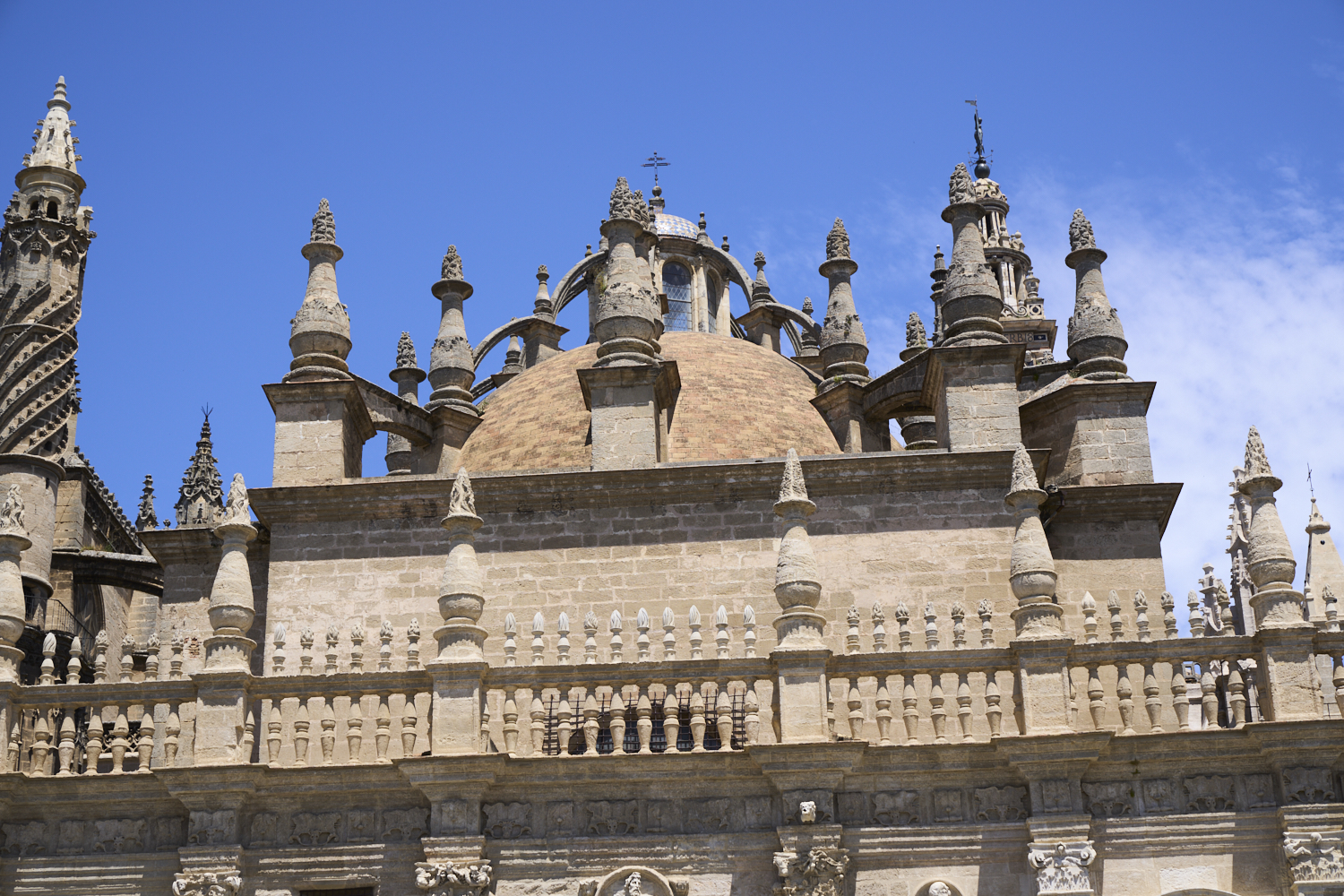
I was
surprised to see the double crosses at the apex of the
dome. I normally associate that with Orthodox Catholic, of
which this cathedral was not.

The main
tower was tall, ornate and impressive with a large apex statue.

The
far side of the cathedral was just as impressive.

These
adornments were clearly from a different era. Note the
flying buttress at the top of the photo above.
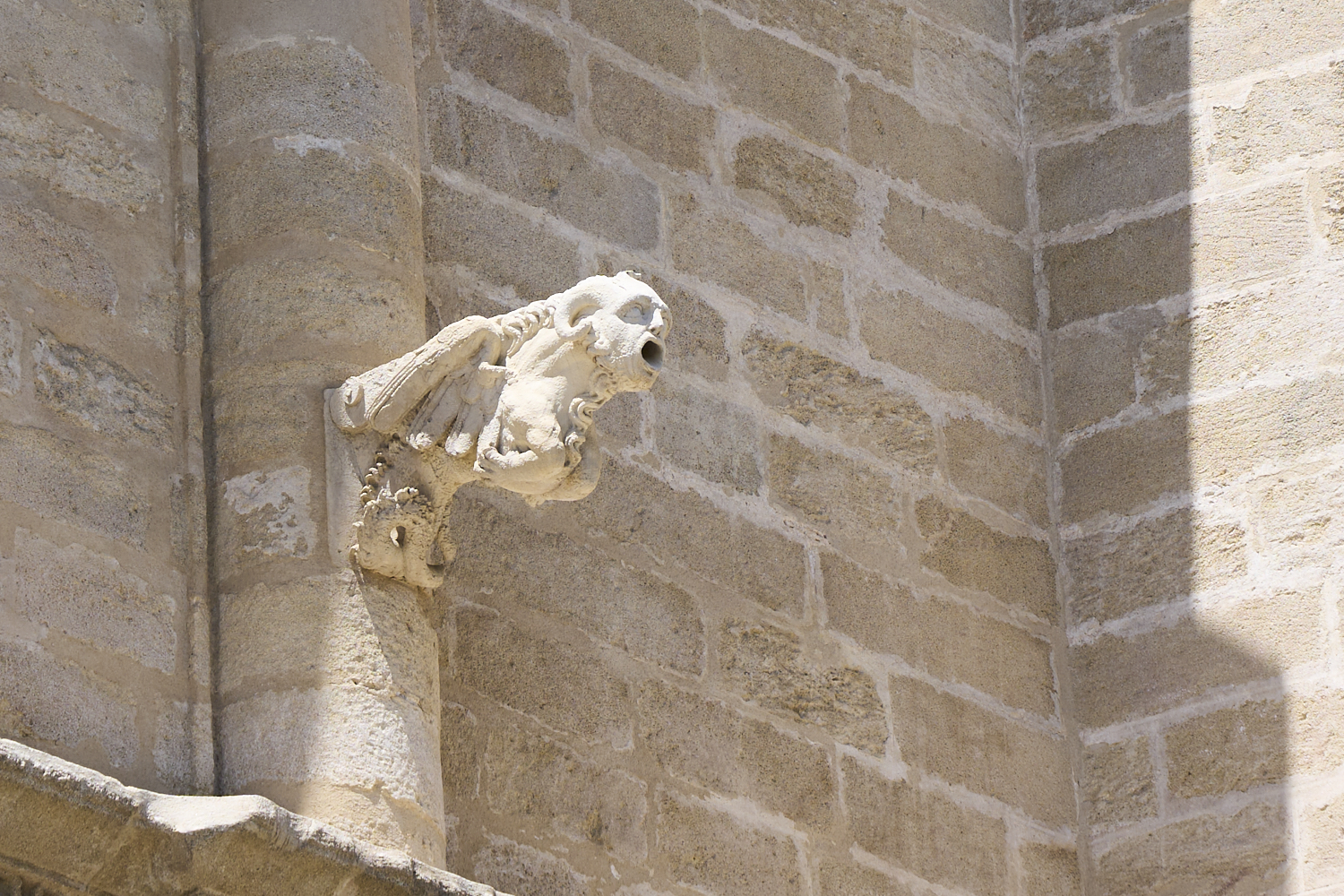
I
believe that this gargoyle is actually a rain gutter spout.

The
far side of the cathedral had heraldic crests which were
intricate.

The
center of a nearby plaza had an imposing plinth topped by a
detailed carved statue.
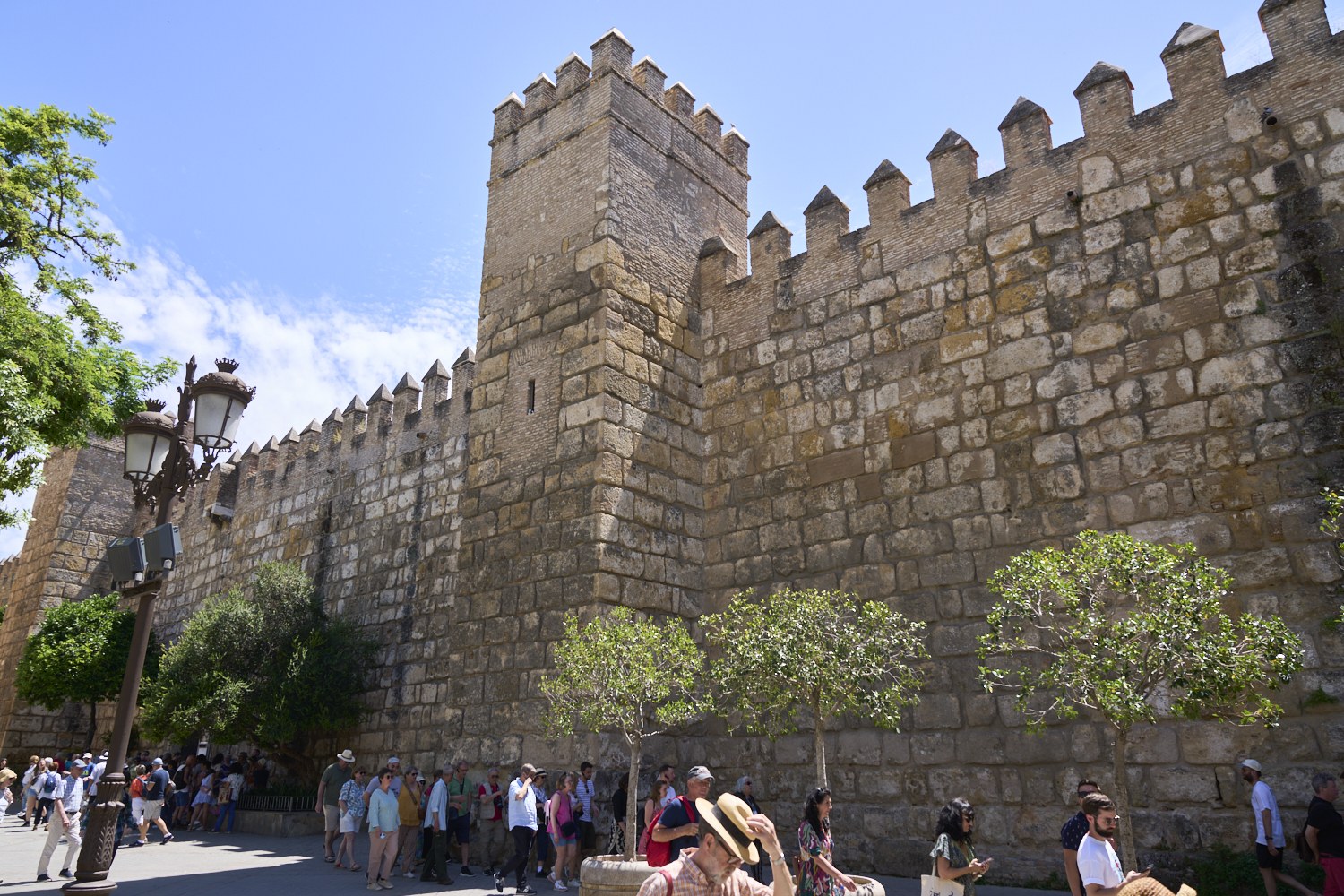
Very
close to the Catholic cathedral was the Alcazar de
Sevilla. This was the Moorish seat of power during their
rule of the area. Again, the lines were substantial and
we had visited the Alcazar during a previous trip, so we
passed on the opportunity.

A more
recent sculpture with lighting atop a fountain.

This
tower was initally constructed by the Moors and then co-opted
by the Catholics after their conquest of Andulsia.

The
lower windows show the Moorish architecture influence.
The small arch with the statue was added later as a retrofit.

Detailed,
ornate carvings above the portals are clearly Moorish.
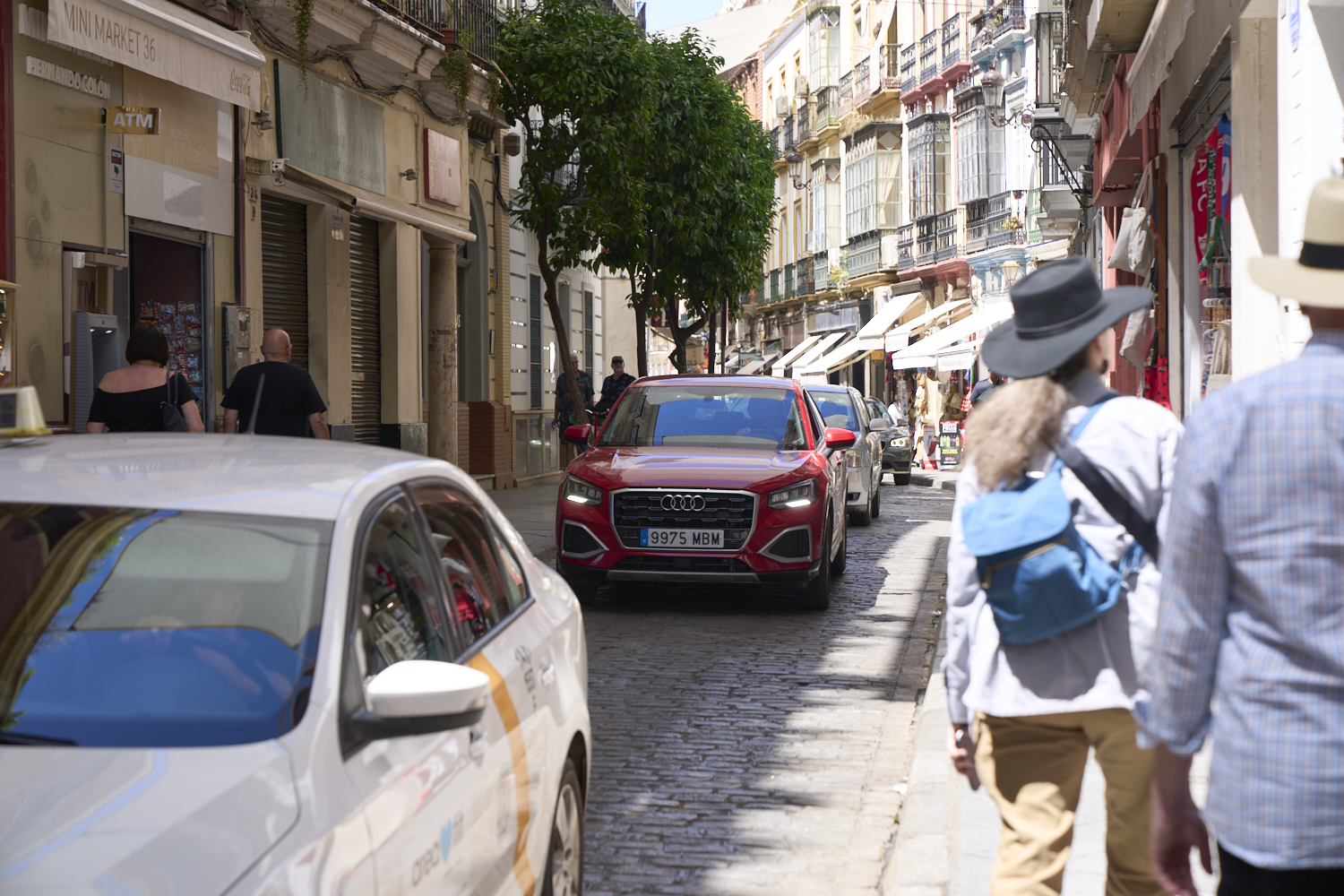
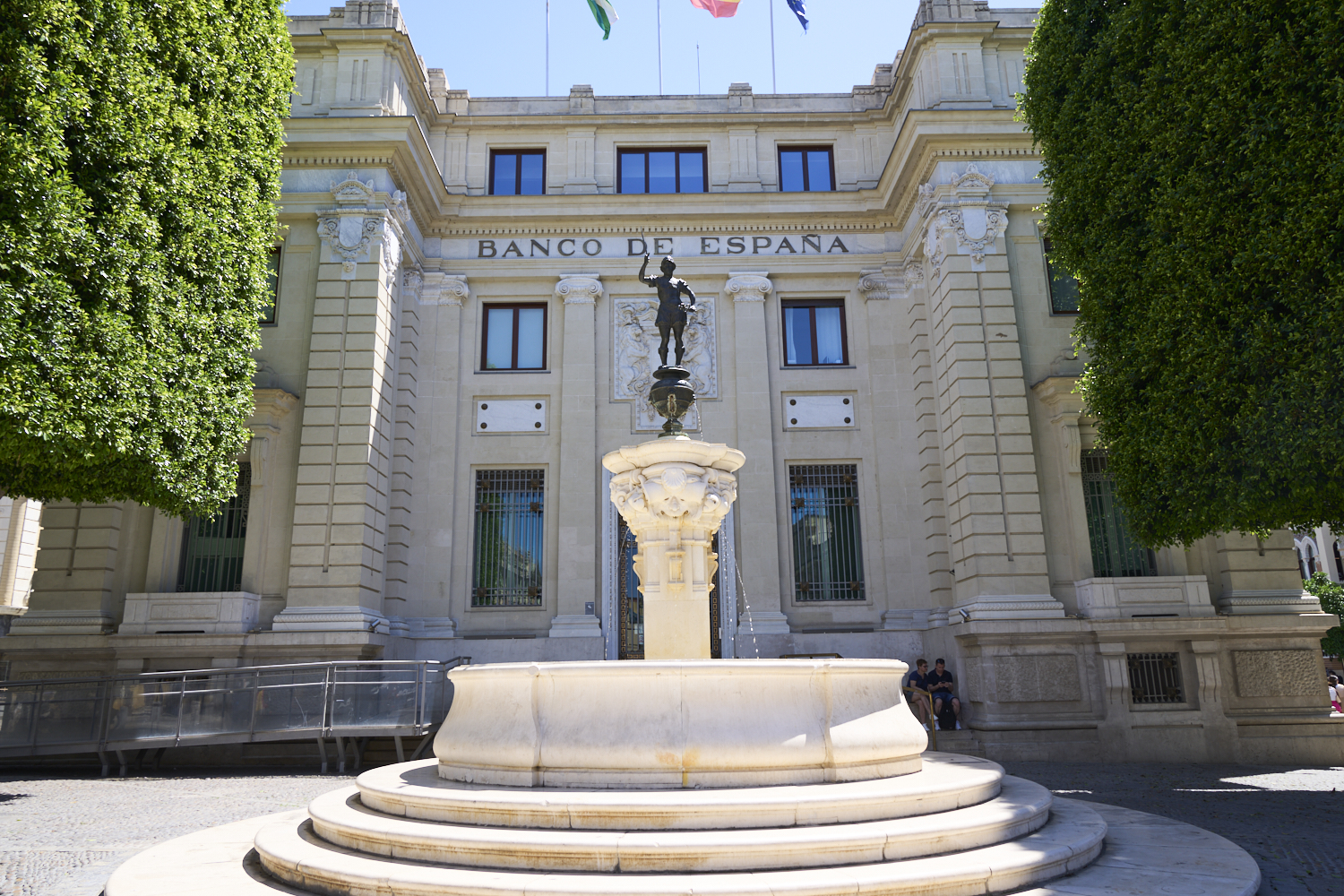
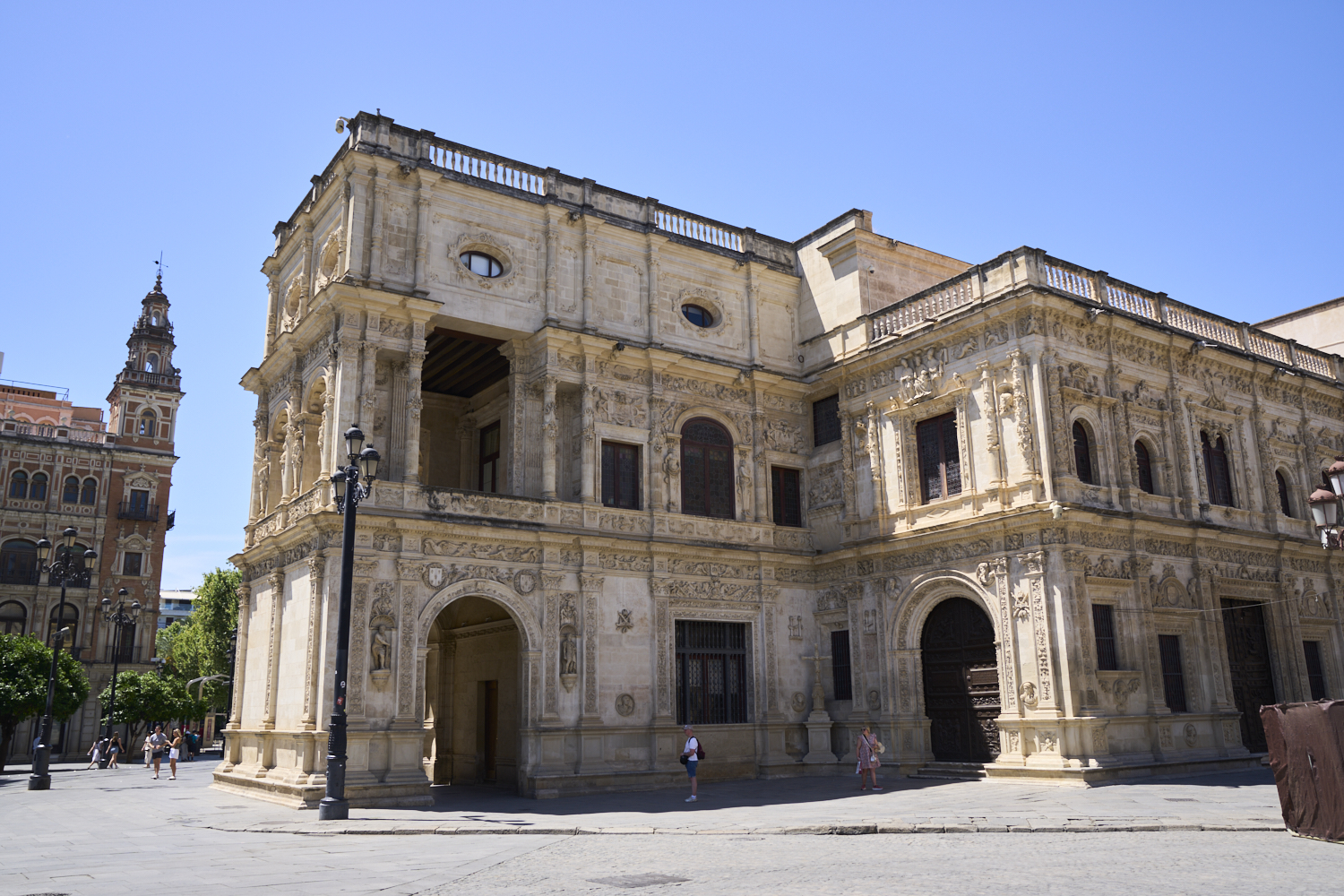

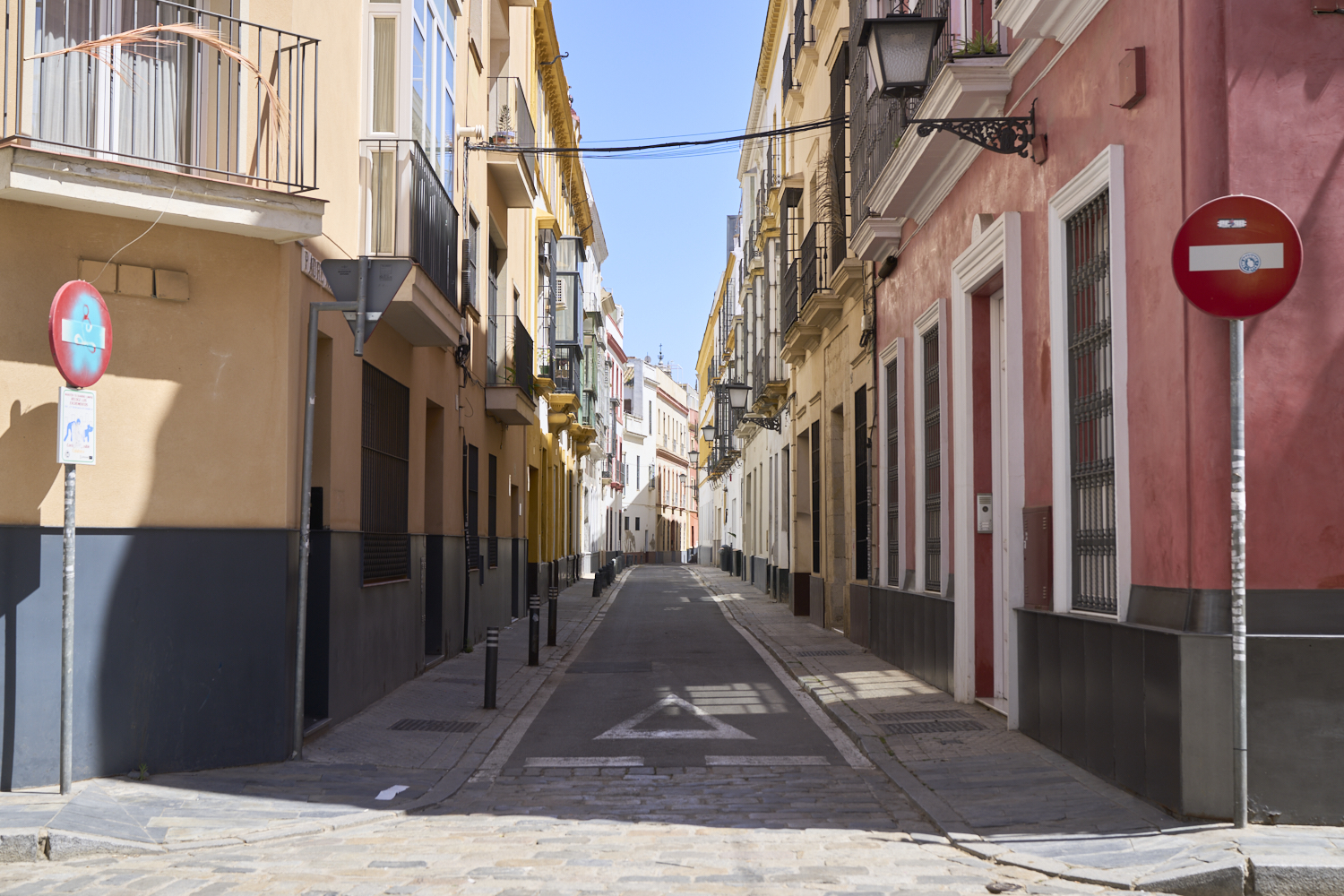
| Previous Adventure | ||
| Trip Home Page |
Photos and Text Copyright Bill Caid 2024, all rights
reserved.
For your enjoyment only, not for commercial use.